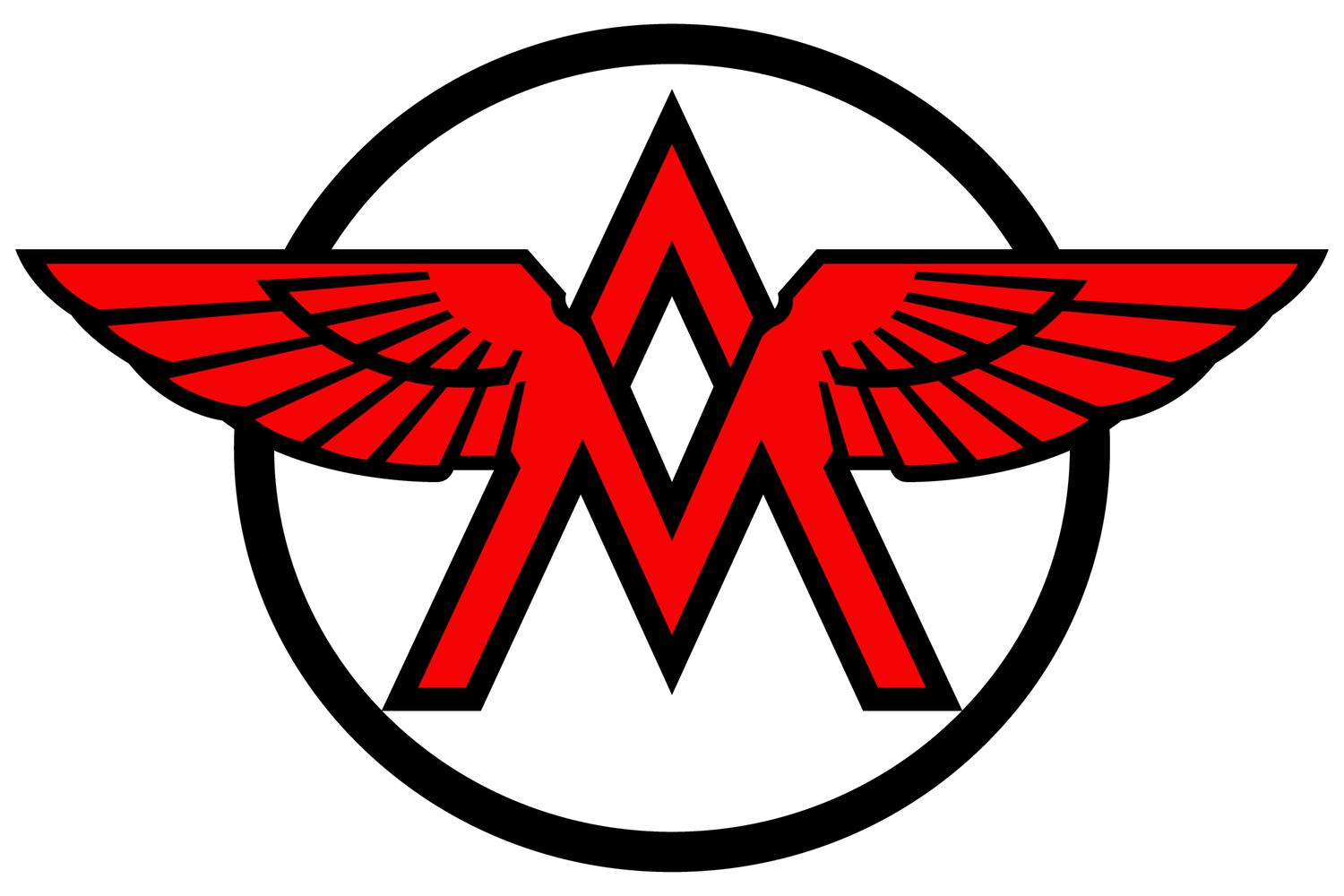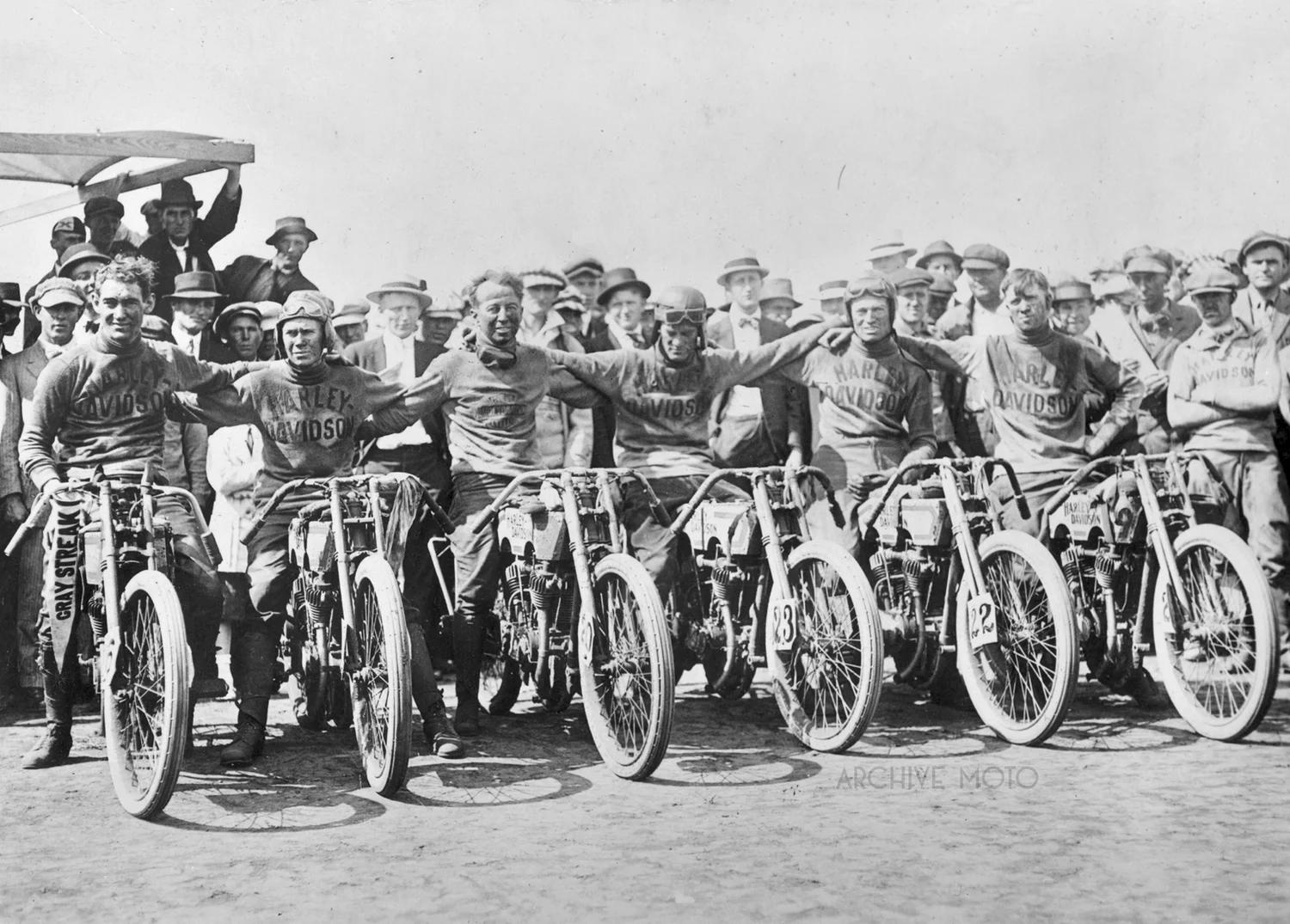The early years of the roaring twenties represent the first high water mark in professional motorcycle racing. It was a period when sophisticated machines were unleashed by men of true and unrelenting grit inside colossal stadiums. The later half of the decade saw the waters of the sport recede, taking with it the days of the large-displacement behemoths, the fiercely competitive factory teams, the national stars, and the splendor of the board track speedway. A movement towards smaller displacement machines, which began with blanked off twins in 1922 eventually led to the development of single cylinder racers and a focus on 1/2 mile dirt track competition.
By the end of the 1920‘s the AMA granted some smaller displacement classes National Championship titles including 21, 30.50, and 45 c.i. engines. Both Indian and Excelsior were quick to develop engines within specifications, resulting in a considerably larger presence in the winners circle at the decade’s end. Simultaneously, hill climb competitions, which dated back to Southern California in the mid-teens had matured throughout the 1920‘s. By 1930 the thrilling spectacle of men onboard odd mutant marvels, wrapped in chains and rocketing up steep walls of earth had become the most popular sport in the country. In 1931 the AMA sanctioned separate championship hill climbs on each coast for the first time, ushering in the golden age of the hill climb. With Class A racing rapidly wilting Harley-Davidson and Indian both decided to focus their attention on the grand ascent, each producing highly-specialized hill climb machines. Excelsior had shifted more factory attention towards hill climbs in the early 1920‘s, but the Chicago based manufacturer, one of America’s big three fell victim to the crash and ceased production in September, 1931.
The new developments of the 1930‘s sparked a cultural shift in racing from a national level to a more regional focus. Local 1/2 mile races and larger dirt speedways like the Springfield Mile, Langhorne, and Laconia rose in popularity while regional heroes took the place of national superstars. As the decade drew to a close the once mighty board tracks were long gone and Europeans held most of the speed records. As it did in nearly every aspect of American life, the Depression Era brought about an unprecedented amount of change within the motorcycle industry and the sport of racing. The decade was essentially the death rattle of Class A competition, but the extreme circumstances also laid the foundation for what would arguably become the most significant and beloved form of racing in the country’s history, one which reignited the intense rivalry between America’s most iconic motorcycle brands, AMA Dirt Track Class C.
Indian and Excelsior already had 45 c.i. platforms as well as specialized hill climb bikes by the late 1920‘s, once again Harley-Davidson arrived late to the race. Their response however debuted in 1929, the purebred 750cc OHV DAH hill climb machine. With its elongated braced frame, small tanks, and distinctive trailing fork linkage the DAH was a fiercely competitive machine and became one of the most rare and highly prized motorcycles that the company ever produced. One of roughly 25 ever produced between 1929 and 1933, the single down tube frame identifies this DAH as an earlier model.





